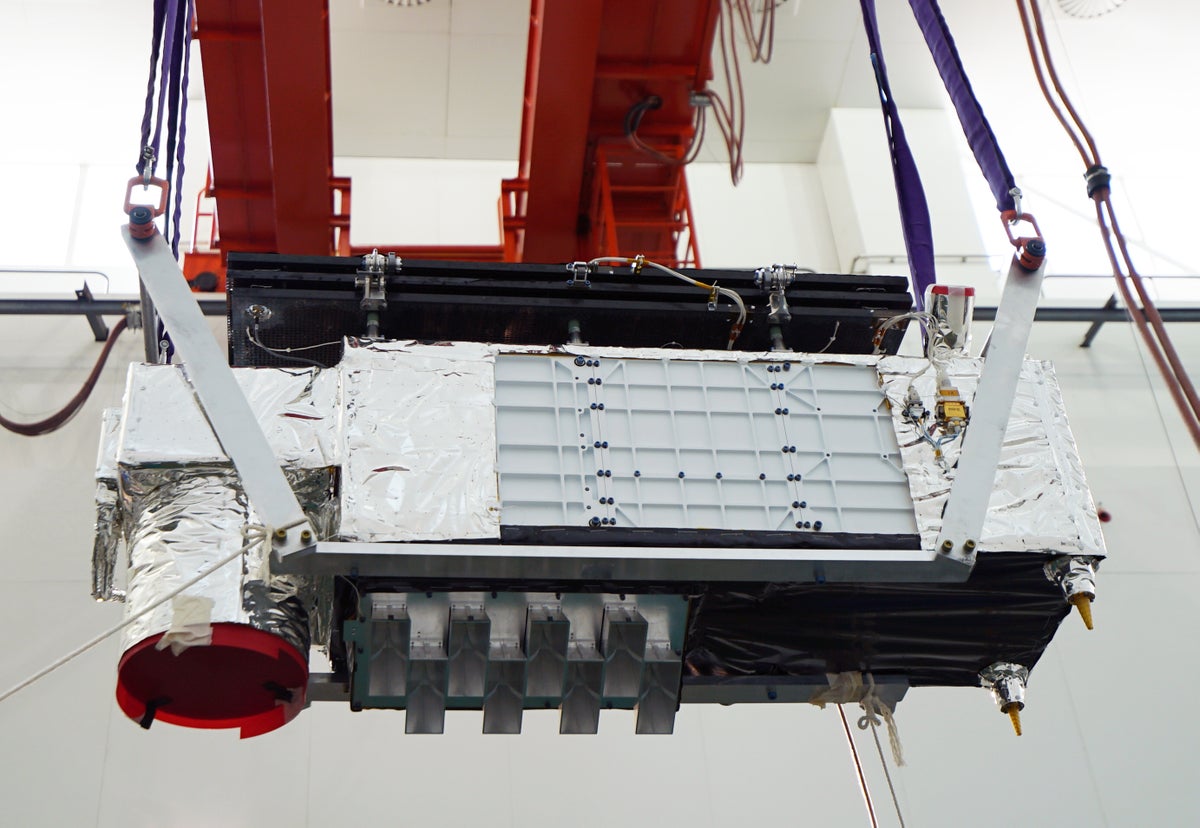Now Reading: Mini-Satellite Achieves Quantum Messaging Breakthrough Over Record Distance
-
01
Mini-Satellite Achieves Quantum Messaging Breakthrough Over Record Distance
Mini-Satellite Achieves Quantum Messaging Breakthrough Over Record Distance

Rapid Summary:
- Researchers in China have achieved a record-breaking quantum communication feat by transmitting encrypted images 12,900 kilometers from Beijing to Stellenbosch University in South Africa.
- The technology relies on quantum key distribution (QKD), ensuring secure messages through quantum states of laser pulses.
- Images of the Grate Wall of china and Stellenbosch’s campus were securely encrypted using this method via the microsatellite named Jinan-1, launched in 2022.
- Jinan-1 is significantly lighter and cheaper (10 times lighter and 45 times less expensive) than its predecessor, Micius (2016).
- Ground-station equipment for the satellite has also been miniaturized substantially, reducing weight from 13,000 kg to just 100 kg.
- The researchers aim to make technology practical for widespread use by collaborating with china Telecom on plans to launch four additional satellites for commercial use by 2026.
- Quantum encryption counters potential vulnerabilities posed by future quantum computers’ ability to break classical encryption methods while leveraging reduced absorption rates during air transmission over fiber optics.
- Although Jinan-1 does not support entangled photons (which would further enhance security), ongoing developments may make this capability feasible in future microsatellites.
Indian Opinion analysis:
The breakthrough achieved with jinan-1 showcases the rapid strides being made globally in secure communications powered by quantum technologies. For India,which is investing significantly into science infrastructure and research – including ongoing developments in space exploration – this milestone could serve as both a challenge and inspiration.while India’s spatial capabilities are robust under ISRO’s programs such as Gaganyaan or NavIC satellites, ventures into enhanced cybersecurity networks like QKD remain nascent.
India may need focused policy frameworks emphasizing R&D collaboration between academic institutions like IITs or IISc alongside private enterprises. Furthermore, pursuing indigenous advancement rather than procurement of foreign systems might yield lasting advancements long term within competing ecosystems fueled competitively & budget/future geopolitically linked arenas prioritizing self-reliance yet selective inclusion collaborations vital alongside allies potentially negotiated incrementally matured elsewise contexts strengthened locally integrateable stages onwards ahead entire prospected worldwide racing scale dimensions forward.



























